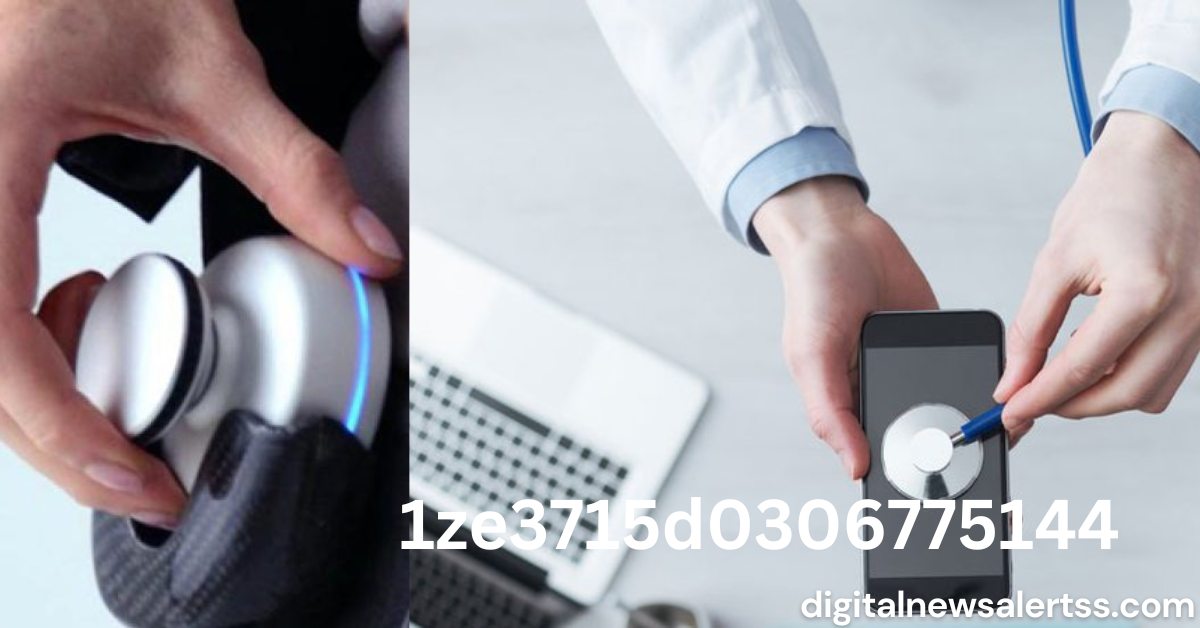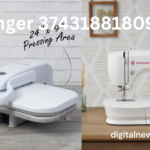In the rapidly evolving world of healthcare, technology is playing an increasingly vital role. One such advancement is the integration of “1ze3715d0306775144” into medical devices, a development that has the potential to revolutionize diagnostic tools and patient care. This article will delve into the intricacies of 1ze3715d0306775144, explaining what it is, its applications in healthcare, and why it’s becoming a crucial component in medical technology. We’ll also explore the impact this integration has on patient outcomes, the challenges faced by healthcare professionals, and the future prospects of 1ze3715d0306775144.
What is 1ze3715d0306775144?
1ze3715d0306775144 is a unique identifier code or a part number, commonly used in logistics, shipping, or product identification. However, in the context of healthcare, this identifier represents a critical component integrated into various medical devices. This integration has enabled advancements in diagnostic accuracy, efficiency, and patient monitoring, making it an essential element in modern healthcare.
Breaking Down the Code
The code “1ze3715d0306775144” might seem like a random string of characters, but each part of it can have specific significance depending on its use in medical devices. While it may originally refer to a product or shipment identifier, in medical contexts, it’s associated with components that are vital for the functioning of sophisticated medical equipment. These components could range from sensors, chips, or even specialized hardware that enhance the performance and reliability of medical devices.
The Role of 1ze3715d0306775144 in Healthcare
The integration of 1ze3715d0306775144 into medical devices marks a significant leap forward in healthcare technology. Here’s how it plays a role in different areas of medical practice:
1. Diagnostic Tools
One of the most crucial applications of 1ze3715d0306775144 is in diagnostic tools. The precision and reliability offered by devices containing this component have significantly improved the accuracy of diagnoses. For instance, in imaging equipment like MRI machines, the components identified by 1ze3715d0306775144 enhance the clarity and detail of images, allowing healthcare professionals to make more informed decisions.
2. Patient Monitoring
Another critical application is in patient monitoring systems. Devices that incorporate 1ze3715d0306775144 can provide real-time data on a patient’s vital signs with higher accuracy and less latency. This real-time monitoring is especially beneficial in intensive care units (ICUs) where timely data can mean the difference between life and death.
3. Surgical Instruments
In the realm of surgery, precision is everything. The integration of 1ze3715d0306775144 into surgical instruments ensures that these tools perform optimally, reducing the risk of errors during procedures. This is particularly important in minimally invasive surgeries where the margin for error is extremely small.
4. Wearable Medical Devices
Wearable technology is becoming increasingly popular in healthcare, providing patients with continuous monitoring of their health. The incorporation of 1ze3715d0306775144 into these devices ensures they function effectively, offering accurate data that patients and doctors can rely on.
How 1ze3715d0306775144 Enhances Patient Outcomes
The integration of 1ze3715d0306775144 into medical devices is not just a technical improvement; it has real-world implications for patient care and outcomes. Here’s how:
1. Increased Diagnostic Accuracy
As mentioned earlier, the accuracy of diagnostic tools has seen a marked improvement with the integration of 1ze3715d0306775144. Accurate diagnoses lead to better treatment plans, reducing the likelihood of misdiagnosis and ensuring patients receive the correct treatment promptly.
2. Timely Interventions
With enhanced monitoring systems, healthcare professionals can detect potential issues before they become critical. This allows for timely interventions that can prevent complications, improve recovery times, and, in some cases, save lives.
3. Personalized Medicine
The data generated by devices containing 1ze3715d0306775144 can be used to create personalized treatment plans for patients. This approach to medicine ensures that treatments are tailored to the individual needs of each patient, leading to better outcomes.
Challenges in Integrating 1ze3715d0306775144 into Medical Devices
While the benefits of integrating 1ze3715d0306775144 into medical devices are clear, the process is not without its challenges. Here are some of the key obstacles:
1. Cost
One of the most significant barriers to the widespread adoption of 1ze3715d0306775144 in medical devices is cost. The components associated with this identifier are often more expensive than standard parts, leading to higher production costs for medical devices.
2. Regulatory Hurdles
Medical devices must meet stringent regulatory requirements before they can be used in healthcare settings. The integration of new components like 1ze3715d0306775144 often requires additional testing and certification, which can delay the deployment of these advanced tools.
3. Technical Complexity
The advanced nature of 1ze3715d0306775144 components means that they require specialized knowledge to integrate and maintain. This can be a challenge for smaller healthcare facilities that may not have the necessary expertise on staff.
Future Prospects of 1ze3715d0306775144 in Healthcare
The future of 1ze3715d0306775144 in healthcare looks promising, with several exciting developments on the horizon:
1. Artificial Intelligence Integration
The next step in the evolution of medical devices is the integration of artificial intelligence (AI). When combined with components like 1ze3715d0306775144, AI can analyze data more efficiently, leading to even more accurate diagnoses and personalized treatment plans.
2. Remote Patient Monitoring
As telemedicine continues to grow, the demand for reliable remote monitoring devices will increase. The components identified by 1ze3715d0306775144 will play a crucial role in ensuring these devices provide accurate and timely data, allowing healthcare professionals to monitor patients from afar.
3. Smart Implants
In the future, we may see the development of smart implants that can monitor a patient’s health from within their body. These implants would rely on advanced components like those associated with 1ze3715d0306775144 to function effectively.
Practical Applications in Real-World Healthcare
1. Cardiology:
In cardiology, devices equipped with 1ze3715d0306775144 components have been used to enhance the accuracy of heart monitoring. These devices allow for the detection of abnormalities in heart rhythms, providing early warning signs of conditions such as arrhythmias or potential heart attacks. This real-time data can be crucial in preventing life-threatening events, offering patients a greater chance of timely intervention.
2. Oncology:
In the field of oncology, early detection is key to successful treatment outcomes. Medical devices integrated with 1ze3715d0306775144 components have improved the sensitivity of diagnostic tools like mammography and biopsy devices. This increased sensitivity allows for the detection of cancerous cells at earlier stages, improving the prognosis for patients and enabling less invasive treatment options.
3. Neurology:
Neurological conditions often require complex diagnostics and monitoring. Devices that incorporate 1ze3715d0306775144 components are being used to improve the precision of neuroimaging tools. These advancements help in accurately diagnosing conditions like epilepsy, Parkinson’s disease, and multiple sclerosis, leading to more targeted therapies and better management of these disorders.
Insights on the Technological Impact
The impact of integrating 1ze3715d0306775144 into medical devices extends beyond just improved diagnostic and monitoring capabilities. It represents a broader trend in healthcare where technology and medicine are increasingly intertwined. Here are some insights into this technological impact:
1. Innovation in Medical Device Design:
The integration of advanced components like 1ze3715d0306775144 pushes the boundaries of what medical devices can achieve. It encourages innovation in design, leading to the creation of more compact, efficient, and powerful tools that can be used in a variety of healthcare settings.
2. Enhanced Data Security:
With the rise of digital healthcare tools, data security has become a top priority. The components associated with 1ze3715d0306775144 are designed with security in mind, ensuring that sensitive patient data is protected from breaches and unauthorized access.
3. Sustainability in Healthcare:
As healthcare facilities look to reduce their environmental impact, the efficiency of medical devices becomes crucial. The integration of 1ze3715d0306775144 components can lead to more energy-efficient devices, contributing to sustainability efforts within the healthcare industry.
FAQs About 1ze3715d0306775144
What is 1ze3715d0306775144 used for in healthcare?
1ze3715d0306775144 is used as an identifier for components integrated into medical devices. These components enhance the accuracy, efficiency, and reliability of diagnostic tools, patient monitoring systems, and surgical instruments.
How does 1ze3715d0306775144 improve patient outcomes?
By improving the accuracy and reliability of medical devices, 1ze3715d0306775144 helps ensure that diagnoses are correct, treatments are effective, and interventions are timely, all of which contribute to better patient outcomes.
What challenges are associated with integrating 1ze3715d0306775144 into medical devices?
The main challenges include the high cost of components, regulatory hurdles that require extensive testing, and the technical complexity involved in integrating these advanced components into existing devices.
Is 1ze3715d0306775144 only used in high-tech medical devices?
While 1ze3715d0306775144 is commonly associated with advanced medical devices, its components can also be found in a wide range of healthcare tools, from basic monitoring devices to complex surgical instruments.
How does 1ze3715d0306775144 relate to data security in healthcare?
The components linked to 1ze3715d0306775144 are designed with data security in mind, ensuring that patient information is protected against breaches and unauthorized access in digital healthcare systems.
What future developments can we expect with 1ze3715d0306775144?
Future developments may include the integration of AI for enhanced diagnostics, the growth of remote patient monitoring systems, and the creation of smart implants that monitor patient health from within their bodies.
How does 1ze3715d0306775144 contribute to sustainability in healthcare?
By enabling more energy-efficient medical devices, 1ze3715d0306775144 contributes to reducing the environmental impact of healthcare facilities, aligning with broader sustainability efforts in the industry.
Conclusion
The integration of 1ze3715d0306775144 into medical devices represents a significant advancement in healthcare technology. Its impact on diagnostic accuracy, patient monitoring, and surgical precision cannot be overstated. While there are challenges to its widespread adoption, the benefits it offers in terms of patient outcomes and the potential for future innovations make it an essential component of modern medical devices. As healthcare continues to evolve, the role of 1ze3715d0306775144 is likely to expand, bringing even more advancements to the field and improving the quality of care for patients around the world.



